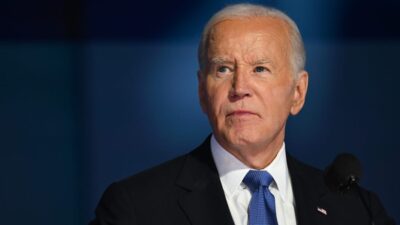Monday, May 19, 2025

In early 2025, analysts predicted a gradual return to pre-pandemic travel patterns. Business travel, long considered a pillar of the U.S. tourism economy, appeared to be making a steady comeback following the industry-wide crash caused by COVID-19. Yet, by April 2025, new government data shows a sudden and significant shift in that trajectory.
According to preliminary statistics from the National Travel and Tourism Office (NTTO), business travel to the United States fell by 9% in April, compared to the same month in 2024. This downturn is particularly alarming as it follows a strong first quarter in which business travel was actually up by 7% year-over-year.
Multiple factors are believed to be contributing to this unexpected reversal, ranging from global economic headwinds to mounting frustrations over U.S. immigration enforcement, tariffs, and border detention practices.
Early 2025: A Brief Resurgence
Between January and March 2025, over 1.2 million business travelers entered the U.S. on business visas, marking a 7% increase from the same period in 2024. This uptick suggested a rebound in corporate travel activities. However, this momentum did not sustain into the second quarter.
April Decline: Regional Disparities Emerge
The April decline in business travel was not uniform across all regions. Data from the National Travel and Tourism Office highlighted significant drops from key markets:
- Western Europe saw a 17.7% decrease in business travelers.
- Mexican business travel by air declined by 11.8%.
- Canadian business travel experienced a 20% drop in air travel and a 35% decrease in car travel.
Conversely, the Middle East was the only region to report growth, with a 9.4% increase in business travel to the U.S.
A Unique U.S. Decline: WTTC Report Highlights Isolation
The WTTC 2025 Global Economic Impact Report paints a grim picture for U.S. inbound travel. The U.S. is projected to lose $12.5 billion in international travel spending this year, marking a 22.5% decline from the 2019 peak of $217.4 billion.
WTTC President Julia Simpson laid the blame squarely on current U.S. federal policy: “While other nations are rolling out the welcome mat, the U.S. government is putting up the ‘closed’ sign,” she said. “Tourist detentions and steep tariffs have damaged the country’s reputation as a destination.”
Simpson acknowledged former President Donald Trump’s hospitality background but criticized what she called increasingly nationalistic policies: “Holidaymakers just want to come and enjoy the beautiful country and its history. They don’t want to live here.”
A Strategic Turning Point?
Experts and industry stakeholders argue that the U.S. still has time to reposition itself as a welcoming, safe, and efficient destination for international business. However, it will require a shift in messaging and policy.
Key recommendations from industry leaders include:
- Improved communication between U.S. embassies and travelers about entry expectations.
- Reevaluation of border screening protocols, particularly those involving digital device searches.
- Streamlined visa renewal and processing, which remains slower than in many peer countries.
- Cooperation with foreign chambers of commerce to restore confidence among global corporations.
Factors Contributing to the Decline
Several elements have contributed to the downturn in business travel:
- Economic Uncertainty: Global economic instability has led companies to reassess travel budgets, prioritizing only essential trips.
- Border Policies: Reports of detentions and stringent border checks have created apprehension among international travelers. Notably, incidents involving German citizens and a Lebanese doctor have raised concerns about the treatment of foreign nationals at U.S. entry points.
- Advance Bookings: Cirium, an aviation analytics firm, reported a 12% decrease in advance bookings from Europe to major U.S. cities for the summer months, indicating a potential continuation of the downward trend.
Impact on the Broader Travel Industry
The decline in business travel has broader implications for the U.S. travel industry. The World Travel & Tourism Council (WTTC) projects a $12.5 billion loss in international travel spending for the U.S. in 2025, a 7% decrease from the previous year. This downturn is attributed to a combination of factors, including a strong U.S. dollar making travel more expensive and political concerns deterring visitors.
Julia Simpson, WTTC President & CEO, emphasized the urgency of the situation, stating, “This is a wake-up call for the U.S. government. The world’s biggest Travel & Tourism economy is heading in the wrong direction, not because of a lack of demand, but because of a failure to act.”
Looking Ahead
As the U.S. grapples with these challenges, stakeholders in the travel industry are calling for policy reforms and initiatives to restore confidence among international business travelers. Addressing concerns over border policies and improving the overall travel experience are seen as critical steps in reversing the current decline.




